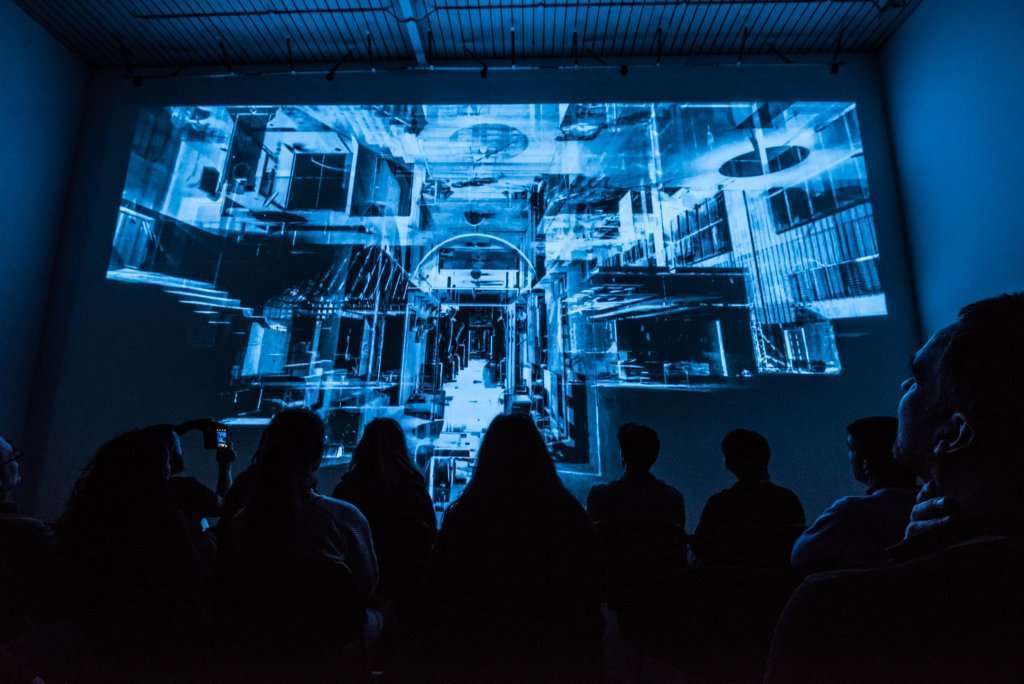What is VR Learning and How Does VR Education Work?
Virtual reality (VR) provides a set of tools and environments that provide new methods of learning. VR education is still at a stage where it is very much something new and advanced, but it’s rapidly gaining traction as more colleges and universities realise its potential to deliver positive learning outcomes.
ST Engineering Antycip specialises in delivering VR systems for higher education, including VR CAVE immersive environments.
How Does VR Learning Work?
The core principle behind VR is to simulate settings and environments in ways that are realistic enough to convince users that they are experiencing them. To do this, VR has to trick the brain.
The brain interprets visual signals to create a perception of reality. In VR, designers use these rules to create virtual environments that conform to how we expect reality to look and feel.
To make this work, VR relies on technology to create immersive experiences. A key part of this is the head-mounted display (HMD). But VR systems can take this further creating entire walk-through environments and theatres.
The technical basics of VR include creating as wide a possible field of view to mimic accurately the human experience. VR tools include head and position tracking, to enable VR users to move within spaces that will adjust to their position. Sound effects are another crucial component, to help convey three-dimensional spaces to users.
VR learning uses these VR tools and systems in an educational context. Students wear HMDs and explore VR environments in ways that create vivid and interactive learning experiences.
How Can Virtual Reality Improve Higher Education?
When it comes to how well students learn, VR has a lot to offer. By creating immersive experiences, VR can improve how students engage with topics of study. Research indicates that VR can improve the learning experience when you compare it to other teaching methods. Much of this is down to its immersive and interactive elements. These encourage active engagement rather than passive learning, helping to boost the mood and motivation of users.
VR also brings a huge amount of versatility to learning. It works both as a remote or distance learning tool, but also in situations where collaborative working will benefit students. Because it relies primarily on technology, it is highly adaptable to different settings and locations.
In terms of what students experience, VR offers a whole range of teaching methods and experiences. For example, students involved in industrial design can use it for virtual prototyping, or to explore the intricate workings of engines close up.
Architecture students can walk through different constructions as if they were on-site. It extends to arts subjects such as history and geography, where students can explore sites, terrains and recreated scenarios, fully immersing themselves.
How Can Virtual Reality Help Students?
For learning to be effective, students have to find ways of retaining knowledge, and understanding how to apply it. Purely cognitive learning is inefficient in this regard. It requires a great deal of concentration, both to absorb and to retain knowledge. But if you add experiential and behavioural elements to this, you can create learning experiences that engage students much more actively, and help them learn and retain knowledge.
VR gives students the space and capability to apply these experiential and behavioural elements into the learning process. Instead of simply finding out how something works by reading about it, for example, they can actually see a simulation of it and experience a sense of what it’s like to operate it themselves.
VR helps students by:
- Engaging them
- Inspiring them
- Encouraging creative thinking
- Enabling peer collaboration
- Making educational experiences memorable
- Providing iterative learning
- Improving their access to educational tools.
VR also helps align students more closely with practical technologies and to learn how these support real-world applications.
This can be extremely valuable in preparing them for the world of work and for modern industries and sectors that are heavily tech-driven.
Immersive VR in Higher Education
VR offers a toolkit for higher education that has a broad range of applications. ST Engineering Antycip has played a major part in immersive VR theatre and VR CAVE installations including support for art, design and architecture and industrial research, but also as a tool in team training and analysis for sports teams.
A key benefit that VR brings to higher education, including colleges, universities and vocational training centres, is how it enhances the learning experience for students.
For more details about our VR education systems and applications, please contact us.




















